Psychology and Sociology Applied to Medicine, 4th Edition
An Illustrated Colour TextNow in its fourth edition, this definitive and popular introduction to human behaviour in the context of health and illness includes three new chapters, many new contributors and a new co-editor.
It is arranged in nine sections to cover the core concepts of psychology and sociology as they apply to medicine.
Now in its fourth edition, this definitive and popular introduction to human behaviour in the context of health and illness includes three new chapters, many new contributors and a new co-editor.
It is arranged in nine sections to cover the core concepts of psychology and sociology as they apply to medicine.
- The life cycle
- Development of the person
- Society and health
- Preventing illness and promoting health
- Illness, behaviour and the doctor-patient encounter
- Illness and disability
- Coping with illness and disability
- Hoe do health services work
- How do you fit into all this?
New to this edition
- 48 new contributors
- New co-editor, Gerry Humphris
- 3 new chapters:
Malnutrition and obesity
Urban nature health and well-being
LGBT Health
Key Features
- Topics presented as self-contained double-page spreads.
- Cases throughout to reinforce understanding of important concepts.
- Boxes and discussion points throughout.
- The authors comprise psychologists, sociologists and doctors.
- Highly illustrated
Author Information
| ISBN Number | 9780702062988 |
|---|---|
| Main Author | By Edwin Roland van Teijlingen, MA, MEd, PhD and Gerald M Humphris, PhD, MClinPsychol, CPsychol, FRCP Edin |
| Copyright Year | 2019 |
| Edition Number | 4 |
| Format | Book |
| Trim | 210w x 297h (8.25" x 11.68") |
| Illustrations | Approx. 102 illustrations (99 in full colour) |
| Imprint | Elsevier |
| Page Count | 193 |
| Publication Date | 25 Feb 2019 |
| Stock Status | IN STOCK |
1 The life cycle
1 The biopsychosocial model
2 Pregnancy and childbirth
3 Reproductive issues
4 Development in early infancy
5 Childhood and child health
6 Adolescence
7 Social aspects of ageing
8 Bereavement
2 Development of the person
9 Personality and health
10 Understanding learning
11 Perception
12 Emotions
13 Memory problems
14 How does sexuality develop?
15 Intelligence
16 Development of thinking
3 Society and health
17 Understanding groups
18 Concepts of health, illness and disease
19 Measuring health and illness
20 Changing patterns of health and illness
21 Social class and health
22 Gender and health
23 LGBT health
24 Ethnicity and health
25 Quality of life
26 Media and health
27 Housing, homelessness and health
28 Work and health
29 Unemployment and health
30 Labelling and stigma
4 Preventing illness and promoting health
31 Perceptions of risk and risk-taking behaviours
32 What are disease prevention and health promotion?
33 Health screening
34 The social implications of the new genetics
35 Health beliefs, motivation and behaviour
36 Changing cognitions and behaviour
37 Helping people to act on their intentions
38 The social context of behavioural change
39 Illegal drug use
40 Alcohol use
41 Smoking, tobacco control and doctors
42 Eating, body shape and health
5 Illness behaviour and the doctor-patient encounter
43 Deciding to consult
44 Seeing the doctor
45 Placebo and nocebo effects
46 Adherence
47 Clinical communication skills
48 Breaking bad news
49 Self-care
50 Patient experience
51 Psychological preparation for surgery
6 Illness and disability
52 Heart disease
53 Malnutrition and obesity
54 HIV/AIDS
55 Cancer
56 Anxiety
57 Depression
58 Inflammatory bowel disease
59 Physical disability
60 Learning disability
61 Posttraumatic stress disorder (PTSD)
62 Diabetes mellitus
63 What is stress?
64 Asthma and chronic obstructive pulmonary disease
65 Death and dying
7 Coping with illness and disability
66 Counselling
67 Urban nature, health and wellbeing
68 Coping and adaptation
69 Cognitive-behavioural therapy
70 Coping with illness and disability
71 Palliative care
72 Complementary therapies
73 The management of pain
8 How do health services work?
74 Organizing and funding health care
75 Assessing needs
76 Setting priorities and rationing
77 Community care
78 Health: a global perspective
79 Health: a rural perspective
9 How do you fit into all this?
80 Medical students’ experience
81 Life as a trainee doctor
82 The profession of medicine
References
Index
From reviews of the previous edition:
‘Fabulous product which oozes quality. Does the job to a tee, was sceptical before purchase as so cheap but it is the best on the market to do this job.’
‘An illustrated colour text covering off all aspects of the lifespan as well as health promotion, society and health and how health services work - to name but a few.’
‘Each chapter has case studies, "stop-think" sections which encourage active reflection, and reinforcement of learning through small, bite-sized reinforced chunks of information.’
‘… a really fundamental textbook for any first- or second-year medical student. It really helps you to appreciate the "non-science" side of medicine; how important it is to understand where the patient is coming from, geographically and ideologically. Also, this book deals amazingly well with current issues, such as social difficulties stemming from genetic testing. The double-page spread format interspersed with extension boxes and pictures is a really easy read and a first-rate revision tool. Indispensable book….’
Related Products
-
20% OFF
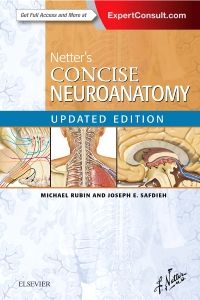 Book
Book
-
20% OFF
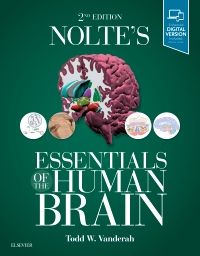 Book
Book
-
20% OFF
 Book
Nolte's The Human Brain in Photographs and Diagrams
Book
Nolte's The Human Brain in Photographs and DiagramsTodd W. Vanderah
Jan 2019
Special Price $51.19 $63.99 -
20% OFF
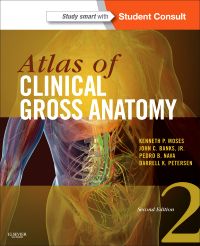 Book
Book
-
20% OFF
 Flash Cards
Flash Cards
-
20% OFF
 Book
Book
-
20% OFF
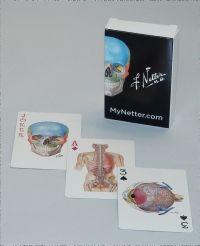 Flash Cards
Flash Cards
-
20% OFF
 Online Resource
Netter's Dissection Video Modules (Retail Access Card)
Online Resource
Netter's Dissection Video Modules (Retail Access Card)University of North Carolina Chapel Hill and Frank H. Netter
Oct 2015
Special Price $144.79 $180.99 -
20% OFF
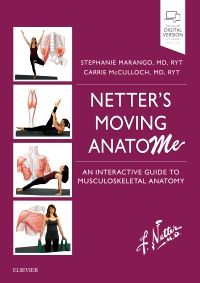 Book
Book
-
20% OFF
 Flash Cards
Flash Cards




